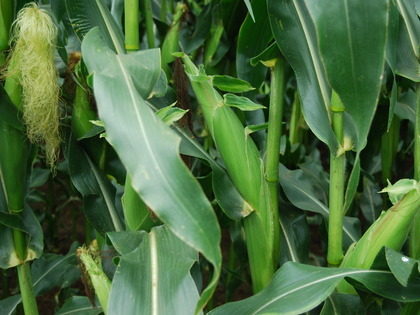
The varieties Smoothi CS and Abrisse from Caussade Semences, Prospect from Limagrain, LiRoyal from DSV and KWS Calvini from KWS are all new entrants onto the Favourable Sites DL.
The Less Favourable DL, aimed at 'marginal' growing conditions, sees the addition of six new varieties - KWS Calvini, Prospect, LiRoyal, RGT Stewaxx from RAGT Seeds, and DSP 46132 and Cardif from Germinal.
The 2020 Descriptive Lists provide a range of varieties for growers to select from, with parameters including dry matter yield, starch, ME and digestibility, in relation to favourable or less favourable growing conditions within the suitable maturity range for the farm location. This diversity allows selection of varieties that best suit the needs of growers across the country.
Favourable sites
Commenting on the new varieties NIAB forage crop specialist Ellie Sweetman highlights the range of maturity, improving choice for growers in all conditions and locations: "On the Favourable Sites DL Prospect is the earliest maturing of the new first choice additions with a 35.1% dry matter content at harvest. It also has the highest metabolisable energy (ME) and highest starch on the list at 11.98 MJ/kg DM and 34.6% respectively. Smoothi CS is the latest maturing at 29%, achieving top of the List with an excellent dry matter yield of 19.3 t DM/ha and good cell wall digestibility at 57.8%."
LiRoyal is a good all-rounder with excellent yields (18.5 t DM/ha) for its maturity (33.3%), an ME at harvest of 11.72 MJ/kg DM and a very good standing power. KWS Calvini scores top of the List for standing power, a character of increased interest after 2018 saw more lodging than growers had experienced for over twenty years. Abrisse is a strong all-rounder, providing good ME and starch at 30.9% dry matter.
"Using the Descriptive Lists to identify high ME varieties that grow well in your conditions can have a significant impact on voluntary feed intake and improved feed conversion, increasing milk and meat yield from forage," says Ms Sweetman. "Higher cell wall digestibility can help support butterfat levels in dairy cows, whereas higher starch can reduce requirements for concentrate feeds, a more cost effective option for many beef producers."
Less-favourable sites
The increased diversity in maturity is followed through with the six new contenders to the Less Favourable DL; KWS Calvini, Prospect, LiRoyal, RGT Stewaxx, DSP 46132 and Cardif.
Growers looking for highly digestible, good quality silage in more challenging growing conditions should select for varieties with good early vigour as a variety's ability to demonstrate vigorous early growth in shorter growing seasons is particularly important. The new varieties are good all-rounders with yield potentials all exceeding 18 t DM/ha, combined with good starch and ME yields.
“The dry conditions of 2018 prevented the establishment of eyespot in the inoculation trial so, currently, there is insufficient data on these new varieties regarding their resistance to this disease. The trial is being repeated for these varieties this year,” explains Ms Sweetman.
NEW Very Favourable DL for 2020
Specific trials have now run for two years providing sufficient data for a new, standalone, ‘Very Favourable’ Descriptive List. Some varieties are also found on the current Favourable and Less Favourable Forage Maize DLs but others, including some later maturing varieties, are unique to this new List.
Varieties on the Very Favourable DL may be suitable for biogas producers growing and using the crop as a feedstock. The List may aid variety selection as producers can check energy output and quality in the form of yield, metabolisable energy (ME), plant digestibility and starch level. However, on some sites a variety from the other Lists may be better suited to the growing conditions. The previous AD (anaerobic digestion) Favourable and Less Favourable Lists have been discontinued.
Biogas plants saw good gas yields in 2018 despite reduced forage maize yields in some areas due to the hot, dry growing season. This reiterates the significance of crop quality, specifically starch content, for anaerobic digestion, increasing interest in varieties strong on quality for this relatively young market.
The BSPB 2020 Forage Maize Descriptive Lists are available to download from the BSPB and NIAB websites.
